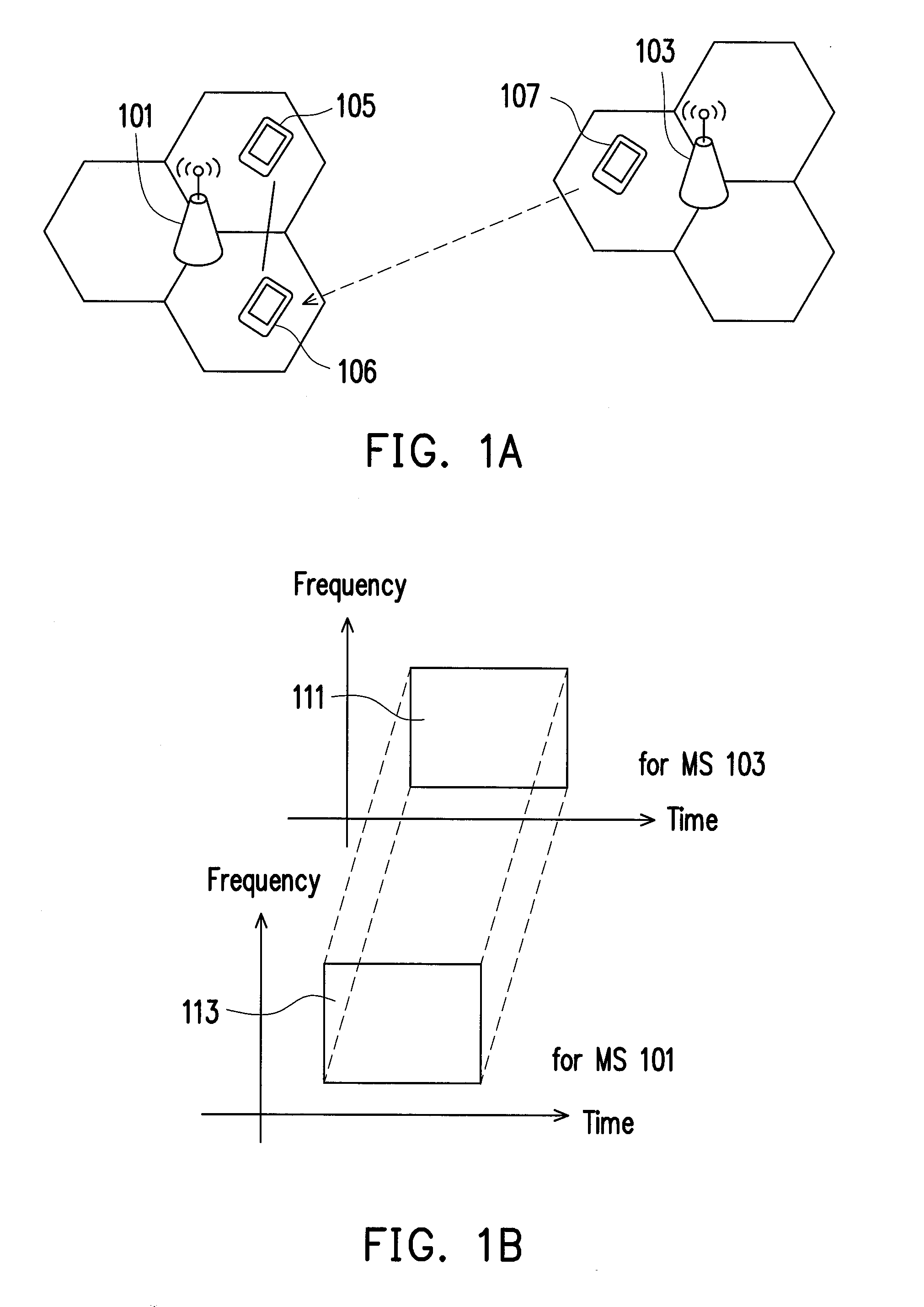Resource allocation method for d2d communications, base station using the same, and user equipment using the same
- Summary
- Abstract
- Description
- Claims
- Application Information
AI Technical Summary
Benefits of technology
Problems solved by technology
Method used
Image
Examples
Embodiment Construction
[0033]Reference will now be made in detail to the present preferred embodiments of the disclosure, examples of which are illustrated in the accompanying drawings. Wherever possible, the same reference numbers are used in the drawings and the description to refer to the same or like parts.
[0034]In transmission resource structure of LTE, radio resources of time domain and frequency domain both could be allocated flexibly as radio resource could be divided in the time domain and in the frequency domain. A physical resource block (PRB) could for example be considered as the most basic unit to describe a radio resource for data transmission in LTE, and a PRB typically has the duration of 0.5 ms in the time domain and would contain 12 subcarriers for each OFDM symbol in frequency domain. In general, the radio resources are allocated by a base station such as an evolved Node B (eNB) for the case of LTE, and the basic requirement of resource allocation is to provide radio resources without ...
PUM
 Login to View More
Login to View More Abstract
Description
Claims
Application Information
 Login to View More
Login to View More - R&D
- Intellectual Property
- Life Sciences
- Materials
- Tech Scout
- Unparalleled Data Quality
- Higher Quality Content
- 60% Fewer Hallucinations
Browse by: Latest US Patents, China's latest patents, Technical Efficacy Thesaurus, Application Domain, Technology Topic, Popular Technical Reports.
© 2025 PatSnap. All rights reserved.Legal|Privacy policy|Modern Slavery Act Transparency Statement|Sitemap|About US| Contact US: help@patsnap.com



